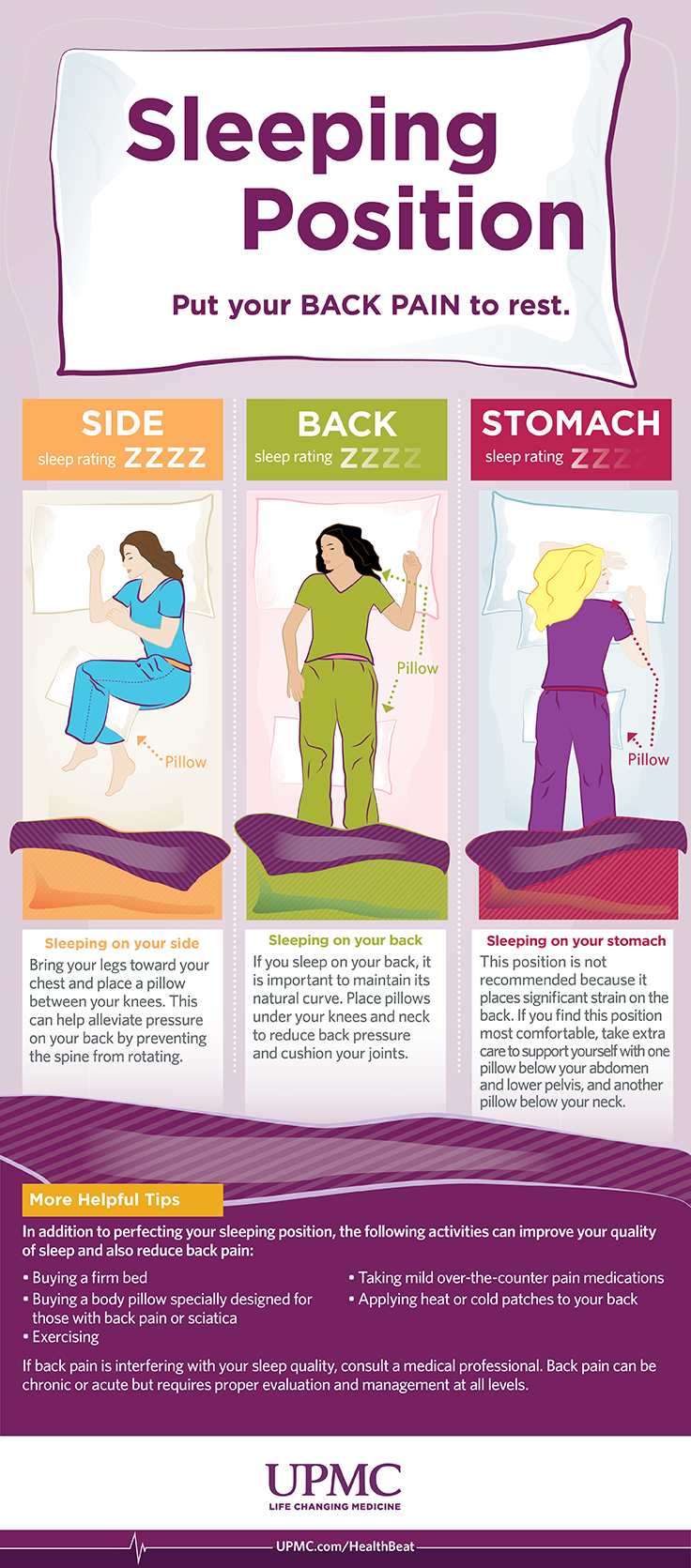There’s nothing quite like a good night’s sleep to leave you feeling refreshed in the morning. Unless, of course, you deal with back pain so uncomfortable it disrupts your sleep schedule.
The average adult will spend approximately one-third of their life sleeping. Most people take this normal activity for granted, but for those with back pain, sleeping can often cause significant discomfort. Pain can keep you awake for hours at a time and can worsen other chronic conditions. However, it is possible to get a good night’s rest and help relieve back pain with proper sleeping strategies.
It’s all about where and how you sleep. Finding the most supportive and comfortable sleeping position is vital when fighting back pain. Starting with the three most common sleeping positions, the Department of Physical Medicine and Rehabilitation at UPMC offers specific suggestions to reduce back pain and get you well-rested.

Sleeping on Your Side
Sleeping on your side is one of the more common and most supportive positions. If this is your preferred sleeping style, bring your legs toward your chest at a slight angle and place a pillow between your knees. This can help alleviate some of the pressure on your back by preventing the spine from rotating.
Sleeping on Your Back
If you sleep on your back, it is important to maintain its natural curve. Supporting the back’s positioning can help reduce pain because the muscles endure less stress. Try placing a pillow:
- Under the knees
- Under the neck
This can help reduce the pressure on your back while also cushioning your joints.
Sleeping on Your Stomach
If you sleep on your stomach, you may find your sleep particularly painful. This sleeping position is not recommended for those with back pain because it places significant strain on the back. If you find this position most comfortable, take extra care to support yourself. Place a pillow:
- Below the abdomen and lower pelvis
- Below the neck
If you find the pillow below the neck places a strain on your back, try sleeping with your head directly on your bed.
More Helpful Tips
With the proper support, you may find you feel more rested and comfortable after a good night’s sleep. If your current sleeping position is causing you pain, change it up but remember to cushion where appropriate.
In addition to perfecting your sleeping position, the following activities can improve your quality of sleep and also reduce back pain:
- Buying a firm bed
- Buying a body pillow specially designed for those with back pain or sciatica
- Exercising
- Taking mild over-the-counter pain medications
- Applying heat or cold patches to your back
If back pain is interfering with your sleep quality, consult a medical professional. Back pain can be chronic or acute but requires proper evaluation and management at all levels.
Comments are closed for this article.